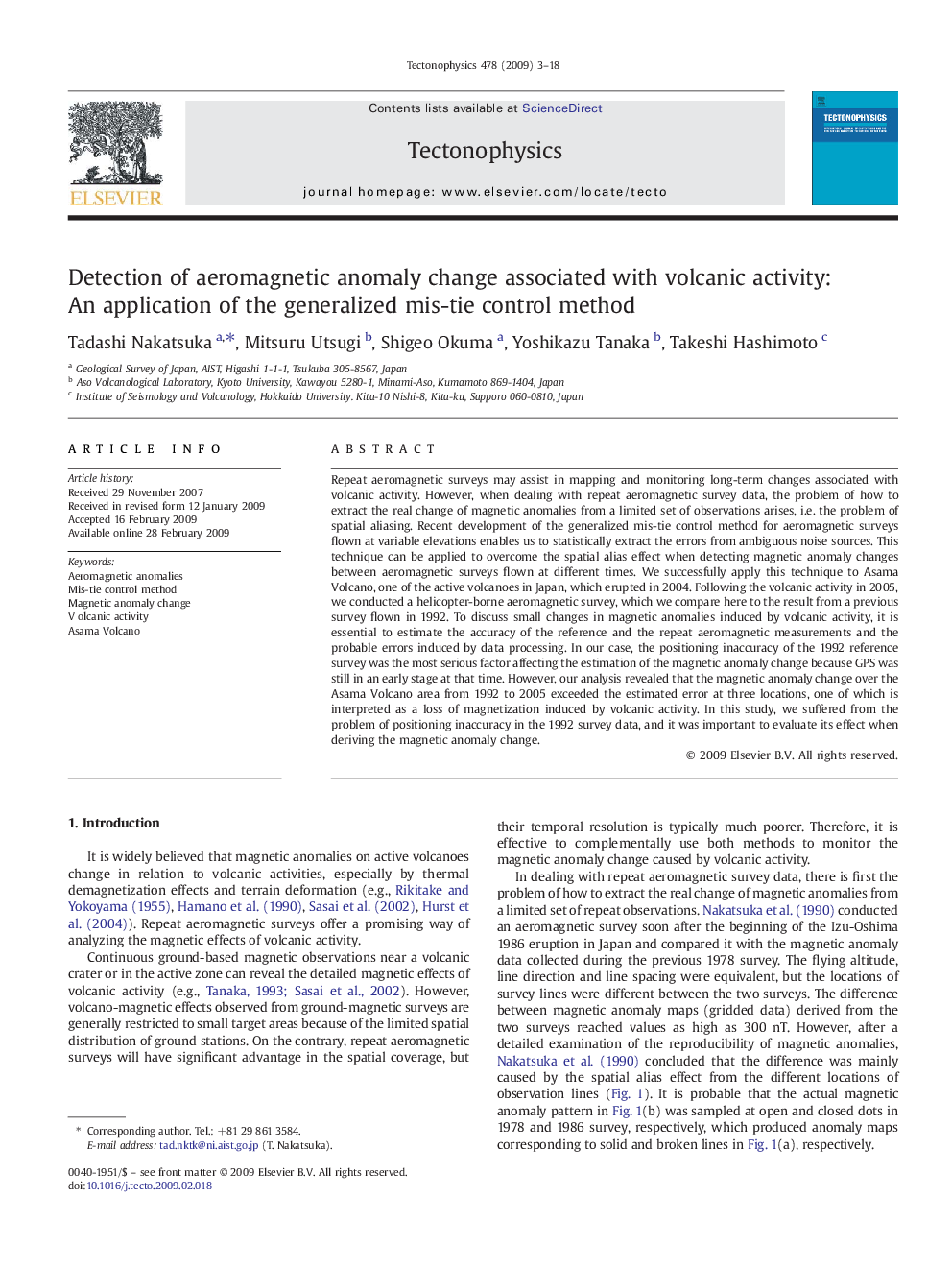| Article ID | Journal | Published Year | Pages | File Type |
|---|---|---|---|---|
| 4693888 | Tectonophysics | 2009 | 16 Pages |
Repeat aeromagnetic surveys may assist in mapping and monitoring long-term changes associated with volcanic activity. However, when dealing with repeat aeromagnetic survey data, the problem of how to extract the real change of magnetic anomalies from a limited set of observations arises, i.e. the problem of spatial aliasing. Recent development of the generalized mis-tie control method for aeromagnetic surveys flown at variable elevations enables us to statistically extract the errors from ambiguous noise sources. This technique can be applied to overcome the spatial alias effect when detecting magnetic anomaly changes between aeromagnetic surveys flown at different times. We successfully apply this technique to Asama Volcano, one of the active volcanoes in Japan, which erupted in 2004. Following the volcanic activity in 2005, we conducted a helicopter-borne aeromagnetic survey, which we compare here to the result from a previous survey flown in 1992. To discuss small changes in magnetic anomalies induced by volcanic activity, it is essential to estimate the accuracy of the reference and the repeat aeromagnetic measurements and the probable errors induced by data processing. In our case, the positioning inaccuracy of the 1992 reference survey was the most serious factor affecting the estimation of the magnetic anomaly change because GPS was still in an early stage at that time. However, our analysis revealed that the magnetic anomaly change over the Asama Volcano area from 1992 to 2005 exceeded the estimated error at three locations, one of which is interpreted as a loss of magnetization induced by volcanic activity. In this study, we suffered from the problem of positioning inaccuracy in the 1992 survey data, and it was important to evaluate its effect when deriving the magnetic anomaly change.
